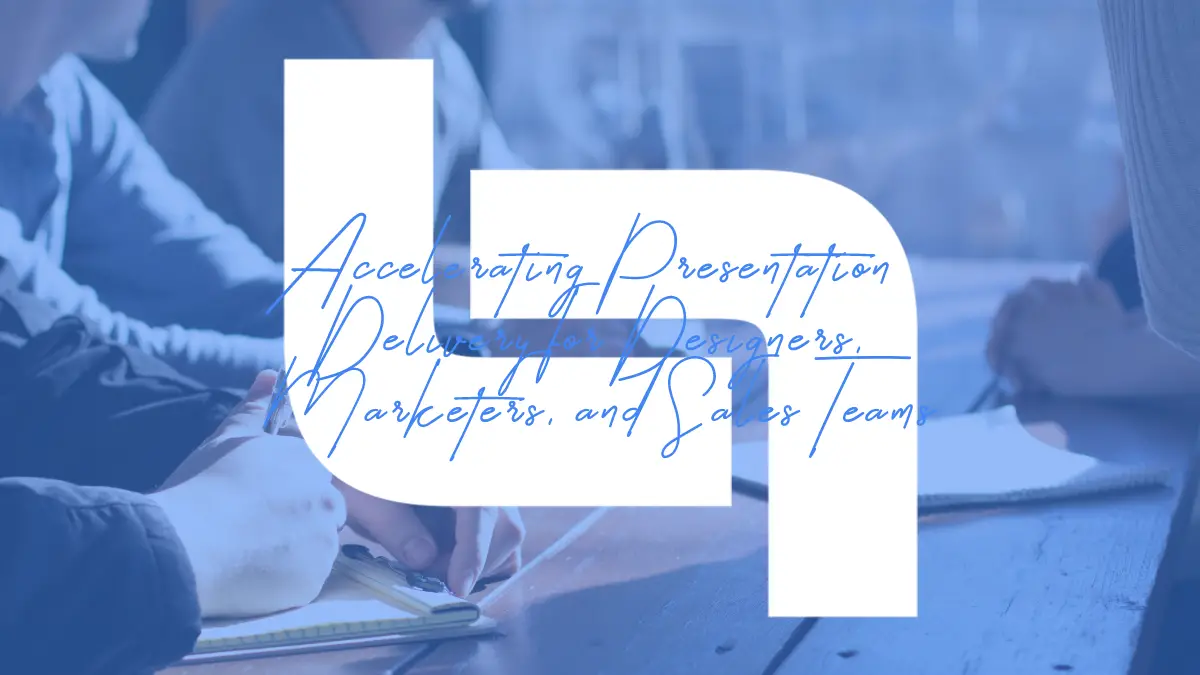Introduction
Effective communication and collaboration are crucial for businesses to stay competitive in today’s fast-paced digital world. Regarding presentation delivery, designers, marketers, and sales teams must work seamlessly together in real-time. By leveraging online collaboration tools, teams can accelerate the process, improve productivity, and deliver compelling presentations that captivate audiences. In this article, we will explore the benefits and strategies of real-time online collaboration and how it can revolutionize how these teams work.
The Power of Real-Time Collaboration

In the traditional approach, designers, marketers, and sales teams often collaborate, leading to a cohesive workflow and timely delivery. Real-time online collaboration tools eliminate these barriers by providing a centralized platform for seamless communication, feedback, and file sharing. This enables teams to collaborate simultaneously, accelerating the presentation creation process and increasing overall efficiency.
Effective communication and alignment are crucial for successful presentation delivery. Real-time collaboration tools allow team members to share ideas, exchange feedback, and address concerns in real time. By fostering open dialogue, misunderstandings are minimized, and everyone is on the same page, resulting in more cohesive and impactful presentations.
In the past, managing different versions of presentation files and tracking changes was a challenging task. Real-time collaboration tools streamline this process by enabling version control, allowing team members to access the latest file updates, and tracking changes in real time. This ensures everyone works on the most up-to-date version, reducing confusion and saving time.
Essential Tools for Real-Time Collaboration

Cloud storage platforms like Google Drive, Dropbox, or Microsoft OneDrive provide a secure and accessible space for teams to store and share presentation files. These platforms allow multiple users to collaborate simultaneously, view real-time changes, and provide comments or suggestions. This eliminates the need for back-and-forth emails and ensures everyone can access the most recent files.
Project management tools like Trello, Asana, or Monday.com help streamline collaboration by providing a centralized platform for task assignments, progress tracking, and deadline management. By assigning specific responsibilities and monitoring progress in real time, teams can stay organized, meet deadlines, and ensure smooth presentation delivery.
Virtual meetings and video conferencing tools, such as Zoom, Microsoft Teams, or Google Meet, play a vital role in real-time collaboration. These platforms enable face-to-face communication, screen sharing, and interactive discussions, regardless of team members’ physical locations. Real-time meetings foster a sense of connection and collaboration, resulting in better presentations and improved teamwork.
For designers, tools like Figma, Adobe XD, or Sketch provide a collaborative environment for designing and prototyping presentations. These platforms allow multiple designers to work simultaneously on the same project, share feedback, and iterate designs in real time. By visually representing the presentation, teams can align their vision and make necessary adjustments efficiently. Utilizing this software, designers create digital brochures, like tri-fold brochure, that allow them to craft visually appealing layouts to effectively communicate a brand’s message and engage the audience in an interactive and informative manner.
Best Practices for Successful Collaboration
Establishing clear communication channels is essential for effective collaboration. Define preferred communication methods, such as instant messaging or video conferencing, and encourage team members to provide regular updates on their progress. By setting expectations and encouraging open communication, teams can resolve issues promptly and ensure a smooth workflow.
Clearly defining roles and responsibilities within the team helps avoid confusion and duplication of efforts. Assign specific tasks to each team member, ensuring their contributions align with their expertise. This fosters a sense of ownership and accountability, leading to increased productivity and successful presentation delivery.
Creating a culture of feedback and collaboration is crucial for continuous improvement. Encourage team members to provide constructive feedback and suggestions to enhance the presentation. Foster an environment where everyone’s ideas are valued, leading to innovative solutions and a more refined final product.
Adopting an agile methodology, such as Scrum or Kanban, can significantly improve collaboration and productivity. Break down the presentation creation process into smaller tasks or user stories, set priorities, and track progress using a project management tool. Regularly review and adapt the workflow based on feedback and changing requirements, ensuring flexibility and responsiveness.
The emergence of blockchain and cryptocurrency technologies is also impacting the landscape of real-time online collaboration. Blockchain-based platforms provide secure and decentralized collaborative environments, ensuring data integrity and trust among team members. Moreover, integrating cryptocurrency exchanges like quantum flash within collaboration tools can revolutionize incentivization models, rewarding team members with digital tokens for their contributions and achievements. This innovative approach can foster a more collaborative and rewarding environment, driving increased team engagement and productivity. As the crypto industry continues to evolve, we expect to see further integration of these technologies into collaboration tools, creating exciting possibilities for real-time collaboration in the future.
Conclusion
Real-time online collaboration has become a game-changer for designers, marketers, and sales teams in accelerating presentation delivery. By leveraging cloud-based file sharing, project management tools, virtual meetings, and interactive design platforms, teams can collaborate seamlessly, enhancing efficiency, improving communication, and streamlining workflows.
Adopting best practices such as clear communication channels, defined roles and responsibilities, encouraging feedback, and embracing agile methodologies further optimize collaboration. Real-time online collaboration allows teams to create compelling presentations that resonate with audiences, ultimately leading to better business outcomes and a competitive edge in today’s dynamic market. By embracing the opportunities provided by online collaboration tools, businesses can harness their teams’ collective creativity and expertise, delivering presentations that captivate and inspire.

